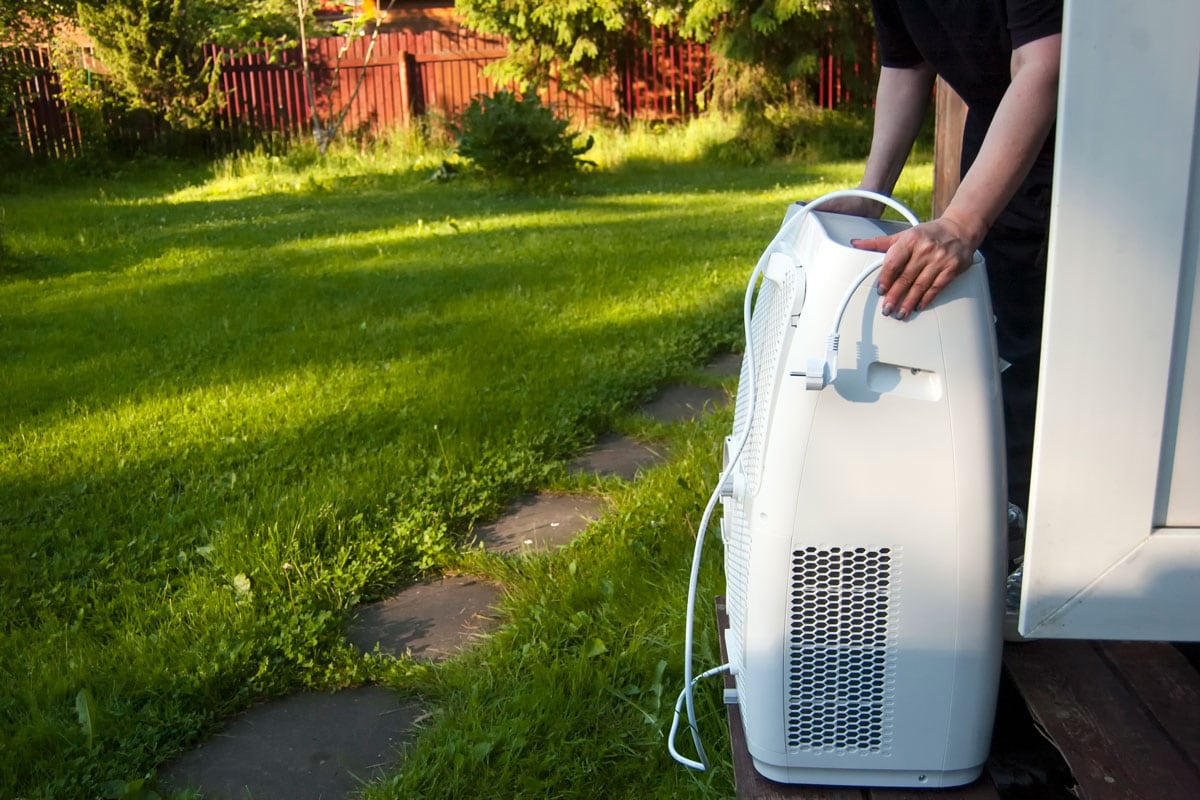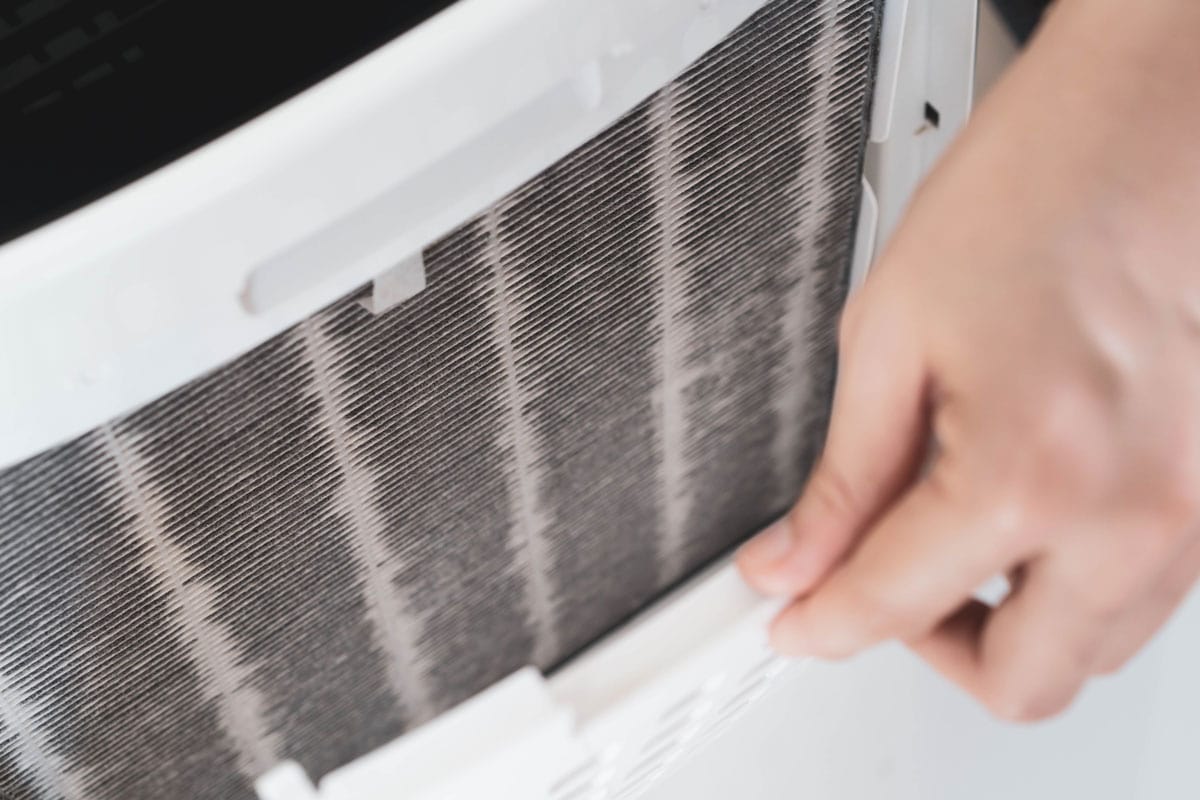Draining water is essential when you have an air conditioner. But if you have an LG portable air conditioner, you may wonder whether it is necessary to drain water from it. We looked into this question, and this is what we discovered.
It is necessary to drain LG portable air conditioners. Although modern LG portable air conditioners have cutting-edge technology, they still need to drain water.
Continue reading as we tackle how to drain LG portable air conditioners and how often you should drain them. In addition, we'll also cover the reasons why water overflows from your portable AC unit.

How To Drain LG Portable Air Conditioners
You will know if your LG portable AC needs draining when the indicator code "FL" will appear on your display. You can either elevate the unit and empty the water into a container, or you can move the unit outside or to a location with a floor drain and let the water drain.

Steps To Drain The Unit
- Switch the unit off and unplug it from the outlet.
- Disconnect the unit's vent hose assembly. You can locate the drain port on the bottom back of the unit.
- If you empty the unit into a container, gently elevate it onto a firm and stable platform—such as a stool—high enough to empty it into a container beneath the drain plug.
- If you want to relocate the unit to a location with a floor drain or an area outside where water can be drained, use extreme caution when transporting the unit with a full water collection tank.
- Remove the drain cap and spin it counterclockwise to start draining.
- Carefully remove the drain stopper. The water will begin to flow out.
- Remove the container once the draining is complete (if you're using a container) and dry any wet spots using a towel or soft cloth.
- Place back the drain plug properly. Water will seep out of the unit if the drain stopper is not fully inserted and shut.
- Screw the drain cap cover onto the drain port by placing it over the drain plug and turning it clockwise. Ensure that it is securely fastened.
- Reconnect the vent hose assembly until it clicks into place. Extend it and form an inverted U at the vent panel to keep rainwater from entering and accumulating in the unit.
- Reconnect the unit to its designated wall outlet. And your unit is now ready to use.
You can watch the whole process in this video:
How Often Should You Drain Your LG Portable Air Conditioner?
If the temperature is very high on a particular day, the humidity level in the air will be high. The greater the humidity in the environment, the more moisture the unit must take from the air.
This causes the unit to fill up faster than usual and, as a result, it will need to be drained more regularly.
What Are Self-Evaporative Portable Air Conditioners?
Regular air conditioners necessitate the removal of an outside container of collected water or the emptying of the unit's water collection tray, whereas self-evaporating air conditioners decrease or eliminate this requirement. It is also known as a no-drip unit since water is not dripping from the back of the unit.
The pipe that vents out your window disperses the water in portable AC units. A self-evaporating unit simply removes any excess water that collects inside the device or in an external container.
Why Is Your Portable AC Rapidly Filled With Water?
There are several factors on why this happens. These are:
- High humidity
- Filthy air filter
- Humid season
- Condensate pump malfunction
- Water not properly drained
- Damaged portable AC blower fan
- Evaporator coil blockage
- Condensate pan capacity is not enough
- Damaged water level indicator
High Humidity

The condensation of humidity from the air generates water in your portable air conditioner, whether it is less or more. The amount of water it produces is proportional to the humidity in the air. So if you reside in a humid area, more water will collect in the condensate pan of your portable air conditioner.
You can utilize a portable AC without self-evaporative technology in a low-humidity environment because you won't have any drainage issues.
However, utilize a partially evaporative or fully evaporative portable air conditioner in excessively humid areas to minimize constant interruption and annoyance.
Filthy Air Filter

The airflow from your portable AC will be blocked if the filter becomes clogged with debris. The airflow rate will be lowered, resulting in less air passing over the evaporator coils.
As a result, the moisture in the air will freeze on the evaporator coils and continue to drop into the condensate pan. Even if you have a partially evaporative portable AC, the water will not be drained at the same pace as it is dripping, so you'll have to empty it constantly.
Check the air filter in your portable air conditioner. Remove the filter and clean it. Air conditioner filters are generally always reusable, so you won't have to replace them.
Humid Season
In general, relative humidity varies by city and area across the country. However, it is also dependent on the season in which your portable air conditioner is used.
Humidity levels are higher on certain days of the year than on others. So the increased amount of water generated on some days may be simply seasonal.
Condensate Pump Malfunction
If you have a condensate pump and water is leaking, or the water tank is constantly filling up, there is almost certainly an issue with the condensate pump configuration.
Water Not Properly Drained
Manually emptying water from your portable air conditioner is the most basic method. Remove the drain cap and allow the device to drain into an empty container to accomplish this.
You will know if there is an issue if you drain manually using this basic method. When you remove the drain plug from your air conditioner, it indicates that the water tank is full, but no water flows out.
One of the reasons could be that a clogged drain is preventing water from exiting the water tank. Nothing could clog it from the inside; thus it is presumably clogged from the outside when it isn't covered.
Damaged Portable AC Blower Fan

Reduced airflow caused by faulty fan operation does not allow enough air to pass through the unit to remove adequate heat from the evaporator coils.
As a result, ice forms on the coils, and the portable AC compressor may cease working temporarily until the ice melts. As the ice melts, the condensate pan quickly fills with water.
Ice will melt more slowly with a gently running fan during this period. When the compressor restarts after it melts, the defective fan will cause the evaporator coils to freeze again.
Because of ice melting, the pace at which water is collected in the pan will be faster than the rate it is discharged.
Evaporator Coil Blockage
Clogged portable AC coils allow less air to circulate through them. As a result, the airflow rate is lower than required.
The required airflow must be maintained through the evaporator coils. Ice will form if the airflow is insufficient, which will melt and repeatedly fill the water tray.
Clean trash and grime gently in an upward and downward motion with an appropriate brush. Then you can clean your portable AC coils with a mix of warm water and soap or dishwashing liquid.
Condensate Pan Capacity Is Not Enough
The tiny size of your portable AC condensate pan or water tray may be one of the reasons it fills up quickly. A smaller condensate pan will fill up faster than a larger one, necessitating more frequent emptying.
You can always utilize a drain line to remove water by bypassing the condensate pan automatically. Alternatively, you can use a condensate pump to address this problem permanently if you need to get rid of water against gravity.
Damaged Water Level Indicator
If you have a malfunctioning, poorly positioned, or misplaced wet or float switch, the portable AC will receive an inaccurate signal regarding the water level. As a result, the portable AC unit will turn off considerably faster, and you will have to empty it even before it reaches full capacity.
In Closing

Like any other portable air conditioner, you still need to drain your LG portable AC unit. Draining water from your unit is quite an easy task. You need to be careful not to let the water overflow, especially when you want to drain it outside.
You can check these related articles to learn more about portable air conditioners:
How Long Can You Run A Portable Air Conditioner Continuously?
